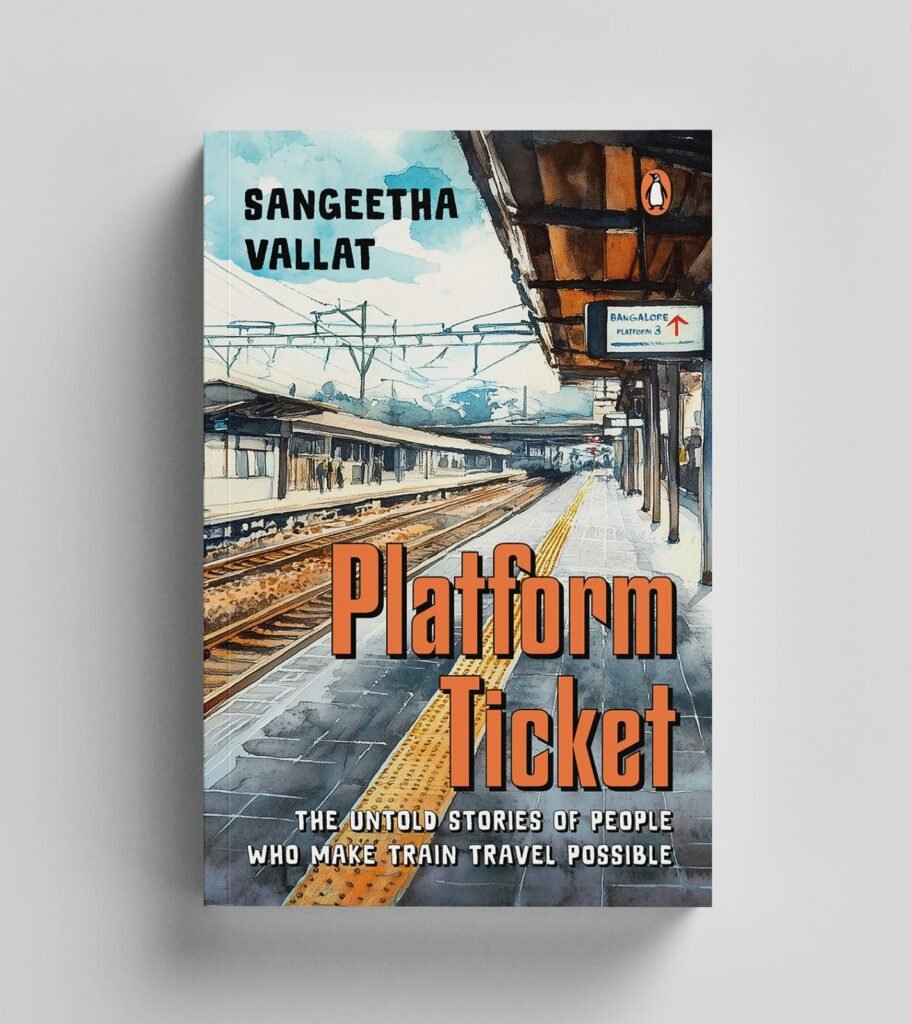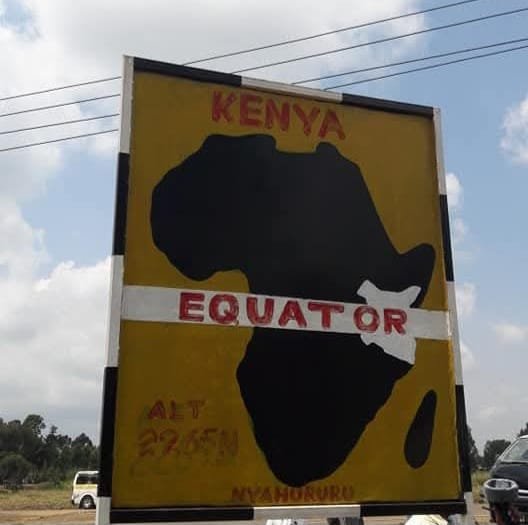
by Sangeetha Vallat | Jul 10, 2025 | Passport Pages
CHAPTER 3 JAMBO FOLKS
From Acacias to Flamingos: A Journey Through Kenya’s Wild Heart
After a memorable stay at Siena Springs Camp, we packed our bags and hit the road toward Lake Elementaita. I claimed the front seat, camera in hand, firing away random questions at Moses, our ever-patient guide, who answered each one with enthusiasm and warmth.
As we drove, the scenery began to shift. The iconic flat-topped Acacias and Mara trees started to thin out, making way for the striking yellow-barked Acacia, also known as the fever tree or Naivasha thorn. These trees are fascinating; not only do they perform photosynthesis through their bark, but they also help maintain the water table. Local tradition holds that their roots, when brewed, help new mothers regain their strength after childbirth. We also passed by groves of whistling thorn acacias, trees that house ants in a fascinating symbiotic relationship. Take it from me: steer clear unless you want to get swarmed!
Soon, we reached Lake Naivasha, a freshwater gem and the highest-elevation lake in the Kenyan Rift Valley. Its name, Nai’posha in Maasai, means “rough water,” though on this particular day, the lake was anything but. It looked calm and still, almost serene. Our boatman, David, helped us aboard, and we set off across the water.
The lake was a haven for birdlife – huge pelicans struck dramatic poses, while ducks and geese floated by like royalty. Barren trees stood silently in the middle of the lake, and I couldn’t help but click away. My cousin teased me, saying my obsession with photographing trees against open skies was a classic “only child” trait. Maybe there’s some truth to it!
David gave us a heads-up and tossed a fish into the lake. Within seconds, a majestic eagle soared from a distant tree, circled above us, then swooped down and snatched the fish with incredible precision. This mini-show repeated a few times and never got old.
Then came the unforgettable moment- a bloat of hippos surfaced, their eyes, ears, and nostrils just peeking above the water. Although they’re herbivores, their sheer size and numbers made the moment spine-tingling. A few even emerged fully, as if striking a pose for our cameras.
Boating done, we continued to our overnight stop: Lake Elementaita Cottages. The lake stretched wide, bordered by misty mountains. Our cottage sat just 20 feet from the water’s edge, an idyllic spot if there ever was one.
However, lunch came with an unexpected guest: flies, zillions of them. They swarmed like mosquitoes, landing on our plates and faces. I had to eat with my mouth shut (Sujith probably appreciated the quiet). The hotel staff reassured us that they were harmless, but that didn’t stop one uncle from spraying mosquito repellent as if it were perfume. Caught in the spray zone, I was liberally sprayed upon. He turned to me, proudly pointing at his wrist gadget, and said, “This creates a safety zone. Africa is a dangerous place.” To be fair, it worked; we could finally enjoy our food.
We tried Ugali, a Kenyan staple made from maize flour. It reminded me of Karnataka’s Raagi mudde, though paler in color. Let’s just say… it was an acquired taste.
As the drizzle set in, we armed ourselves with a broken umbrella (from the cottage), camera, and binoculars, and walked along the lake’s edge. Across the water, flocks of pink flamingos shimmered in the distance, visible only through binoculars. They were expected to fly closer by morning.
And fly they did.
At dawn, we stood in awe as the flamingos drifted across the lake, their soft pink feathers glowing against the early light. The camera couldn’t do justice to the moment. Grebes floated nearby, and blue-spotted doves cooed from the cottage rooftops.
Next on our itinerary: the Equator Line and Thomson’s Falls, followed by an overnight stay in Nairobi. The drive from Elementaita took us through a series of small towns – Gilgil, Ntule, Kekiyoupe, and Nyandarua. The roads wound through barley and maize fields, children waved from the roadside, and local markets buzzed with life. Donkey carts ambled past, while colorful fruit and veggie stalls lined the streets. Fun fact: the tomatoes here are incredibly sweet, I genuinely considered buying for home!
I need to tell you my friends, the cacti here are so giant, they grow like trees. I was particularly attracted to one shaped like a candelabra, and Moses said it was called the candelabra cactus. I was thinking of a similar one planted in my home in a small pot, not giving it enough space to grow immensely!
Moses chuckled when I compared it to the poor, stunted one growing in a tiny pot back home.
Eventually, we reached Nyahururu town and Nandi County, home to the iconic Equator Line. We watched the classic experiment where water spins clockwise in the Northern Hemisphere and counterclockwise in the Southern Hemisphere, and stands still on the Equator. Tourists scrambled to film it, and yes, I got the certificate for crossing the Equator (you never outgrow souvenirs).
Sujith and I stood on either side of the Equator line, holding hands and laughing as others followed suit. After some hard bargaining and shopping for tribal art (my house is slowly becoming a mini-Africa), we ended the day with steaming chai and local banter.
Our final stop: Thomson’s Falls, where we would break for lunch and soak in the dramatic beauty of Kenya, once again.
Coming up next: Exotic meat tasting and milk-gulping elephants and thorn-tackling giraffes
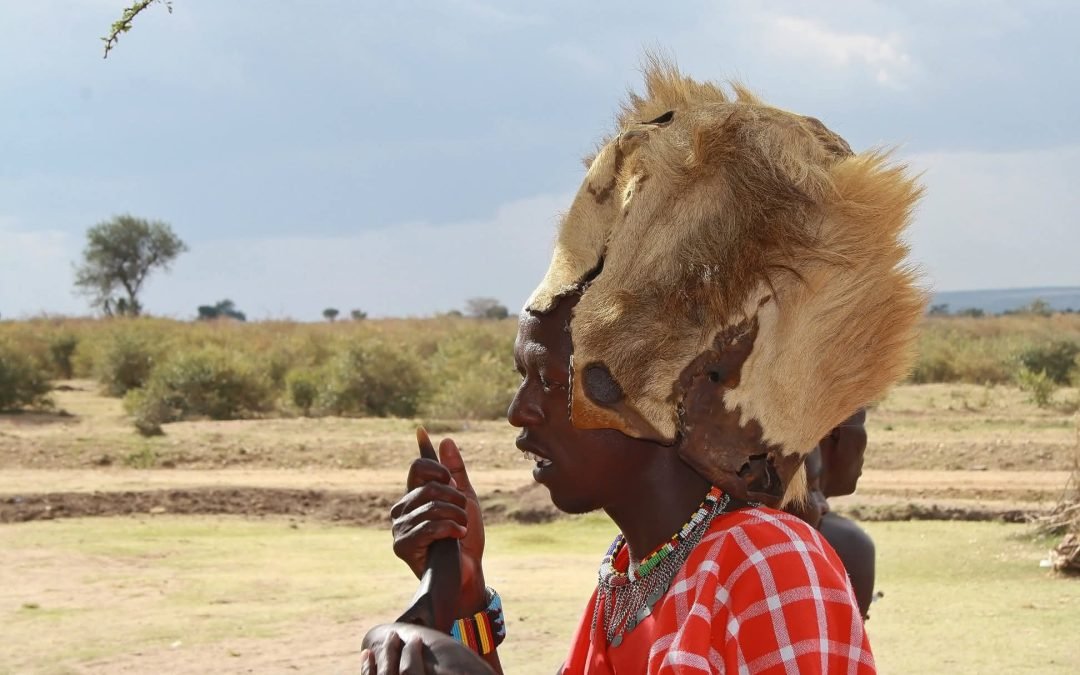
by Sangeetha Vallat | Jul 10, 2025 | Passport Pages
CHAPTER 2 HAKUNA MATATA (NO WORRIES)
Into the Wild: A Day in the Masai Mara
Mambo (Wassup), everyone!
Our stay at Siena Springs Camp was as close to an off-the-grid experience as you can get. The camp runs its generator from 5 AM to 11 AM and again from 6 PM to 11 PM, meaning any action after dark or before sunrise happens in complete darkness. Naturally, that meant planning our day around generator hours, and with the best game drives happening early, we decided to head out by 6:30 AM.
Except… I may have misjudged the time.
Excited for the day ahead, I jumped out of bed when I saw the lights were on, and assumed it was 5 AM. I promptly woke up Sujith, only to realize it was still 4 AM. His glare could have lit the tent on its own. The generator had come on early, and my internal clock betrayed me!
We were ready on time, but our co-travelers made a fashionably late appearance, and we finally set off at 7:45 AM. Before entering the reserve, we paused for some photos at the gate and picked up a few souvenirs from the friendly Masai (also Maasai) traders. With the van’s roof popped up two feet, we were ready to stand and soak in every moment, strictly instructed not to get down until the drive was done. Six hours in the wild… my only worry? The bladder.
Almost immediately, we were surrounded by a “dazzle” of zebras. They posed effortlessly, some staring curiously, others completely ignoring us. I could have stared at them all day, but a few minutes was enough for my eyes to see the black and white striped pattern everywhere. Thomson’s gazelles darted by, petite, elegant, and shy. Elands stood motionless, lined up like schoolchildren being punished.
The landscape stretched endlessly. With a pair of binoculars we’d bought just before the trip, I tried adjusting the focus over my spectacles. Easier said than done on the bumpy ride! Moses, our guide, had near-telescopic vision, and he spotted creatures far in the distance. We saw Secretary birds striding through the grass, displaying their plumes, the Kori Bustard – the heaviest bird capable of flight, and a colourful Barbet on a bare tree branch.
Then came the king.
A lion, resting in the bushes. Distant, but majestic. Through the binoculars, it felt like he was right in front of me. Sujith and I traded places between the camera and the binoculars, thrilled at the sight.
But it was the wildebeest migration that truly took our breath away. Millions. Yes, millions of them blanketing the plains, moving in herds, grazing, roaming. No photo or video could do justice to the sheer scale of this “confusion” of wildebeest. It was nature’s drama at its finest.
Midday, we stopped for a picnic under a tree. The camp provided a packed lunch, and we munched on sandwiches while standing around the van. Moses found us a secluded spot for a quick loo break. A truly wild experience, imagine hiding behind a bush in lion country, just hoping nature doesn’t come calling in return.
Later, we spotted a lone elephant silhouetted against golden grass and blue skies, a living painting. Tall grass made it tough to approach, but the memory lingers. We reached the Masai River, the famous crossing point of the migration. Here, wildebeests face the jaws of crocodiles as they cross into the Serengeti. It’s nature at its rawest.
And then, tinkle time again. I begged Moses, who reluctantly let me out. Sujith stood guard (not sure if he was protecting me from predators or saving himself from my whining). Minutes later, just as we rolled away, we saw her: a lioness under a tree. Then another. And another. Soon, we were surrounded-seven lionesses, seven people in the van. A perfect, pulse-raising standoff. They lounged, uninterested in us. Perhaps they were full. Perhaps we weren’t appealing. We moved on, exhaling in unison.
Giraffes have always fascinated me – they are graceful, tall, and oddly elegant. Maybe my yearning for a few extra centimetres in height was why I liked this tall creature. I’d first seen them at Al Ain Zoo in the UAE, since there are none in the Chennai Zoo. The Masai Giraffes were stunning with their unique patterns. Watching them stretch their necks for acacia leaves or awkwardly spread their legs to graze was a gentle contrast to the wild drama we’d just witnessed.
The buffaloes, one of the Big Five, stood their ground with a lazy, intimidating stare. A cheetah rested on a nearby treetop, completely unbothered by the crowd of safari vans. Above, vultures circled ominously. We missed spotting a rhino this time, but hey, maybe next trip!
Our last stop before heading back was a Masai tribal village just outside the reserve. The welcome was warm and colorful. One man, wearing a lion’s mane, claimed he had killed a lion at age 10. “Folklore,” Moses whispered, smiling. But when I showed his photo to my young friend Parik in Dubai, his eyes sparkled. “He’s like the Black Panther!” he said. The man’s stick, he insisted, must be vibranium. Whatever!
The Masai men performed their famous jumping dance. We learned that the higher a man jumps, the more desirable he is as a groom, apparently, a key factor in winning a bride. Women sang joyfully, and I joined in a playful attempt to mimic their steps. The chief’s son explained their customs: multiple wives, dowries paid in cattle, and a tight-knit extended family structure. He would soon marry a girl chosen by his parents, and hoped to stick with one wife! He explained that the first wife was selected by his parents, but the rest were his wishes.
We purchased some handmade tribal artifacts before returning to camp, just as thunderclouds gathered. I managed to snap a few shots of the tents and surroundings before the skies opened up. Rain poured down, accompanied by thunder and lightning — a dramatic finale to an epic day. The chill, the sound, the wild energy, it felt like nature was putting on a show just for us.
As the raindrops drummed the canvas tent, we knew: the wildebeest were on their way to Tanzania, across the Masai river, and we had been lucky enough to witness their journey.
Coming up next: Falmingoes, flies, and dancing matchsticks.
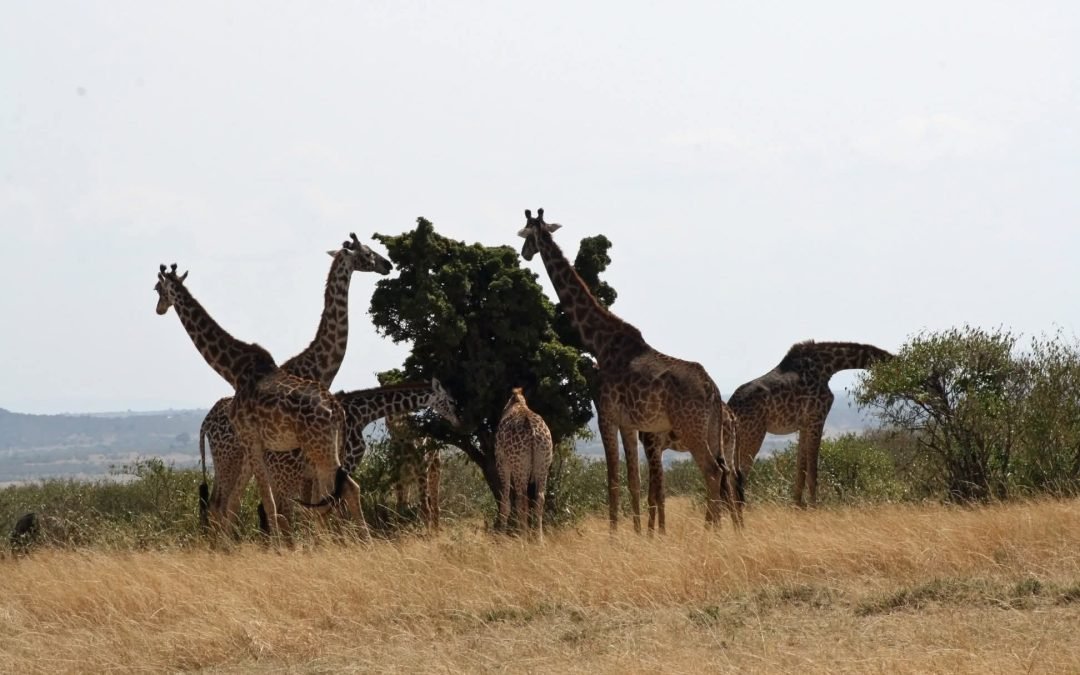
by Sangeetha Vallat | Jul 10, 2025 | Passport Pages
We travelled to Kenya in August 2018, and I wrote this blog post in September 2018 when the memories were fresh. I jotted down info on my Samsung Notes during the trip. I had learnt a few Swahili words and exhibited my knowledge to the locals. Our guide, Moses, had answers to all my questions. Since the others in the van weren’t keen on sitting in the front seat, I hopped into the seat beside the driver, clicking pictures, pointing at trees, birds, animals, and buildings, and shooting questions. Sujith asked if I had plans to take up a job as a guide in Kenya. This travelogue is a 4-part series.
Chapter 1 KARIBU (WELCOME)
Into the Wild: From Dubai’s Glitz to Kenya’s Savannah
After the glamour-soaked high of Dubai, Jomo Kenyatta International Airport felt… ordinary. A cool breeze greeted us as we stepped off the flight, and already the contrast was stark. Living in Dubai spoils your sense of wonder; everything that isn’t gold-plated and gleaming feels underwhelming.
We were a group of 25: five Tamil-speaking couples with their energetic, snack-laden kids and the two of us. They were all neighbors back in Dubai and apparently, regular vacation buddies. At the arrivals, we were met by representatives from Sawa Sawa (which we learned means “OK OK” in Swahili), partners of Akbar Travels. A tall, dark man with an unpronounceable name gave us a welcome speech, laying out the rules and plans for the trip.
It was nearing lunchtime, and we had to wait for another group to land. The Tamil gang, ever generous, shared their chapatis and pickle with us. Kids equal snacks, and they had come prepared. We picnicked in the parking lot.
As we got ready to board the three minivans lined up for us, we were pulled aside. We’d be traveling with another couple, who would be arriving on a later flight from Dubai. Already tired from delays, the extra 1.5-hour wait did not improve our mood. We passed the time people-watching – jubilant groups of tourists streamed out of the airport, reminding us of Holden cars or pop bands (no relation, of course).
Our new companions arrived: a Malayalee couple with two kids. We were now complete.
Our driver, Moses, was a small, wiry man with an easy smile. The first thing I noticed? Crows. But not just any crows, these had white chests! Moses told us they were Pied Crows, or Corvus albus. Sujith gave me a knowing look. He knew I’d be testing our driver/guide’s patience with my curiosity. We took a few photos before beginning our journey to the Masai Mara National Reserve, approximately 280 km away, which is roughly a six-hour drive.
As we left Nairobi, I was glued to the window, capturing the stone buildings and suburbs with my camera. They resembled military quarters typically found in cantonments. The Malayalee family seemed disinterested, already half-asleep. But I was wide-eyed, soaking in every moment.
The Great Rift and a Greater Realization
We stopped at a viewpoint overlooking the Great Rift Valley escarpment near Mai Mahiu. The sign said it stretched from Israel to Mozambique—9,600 km. I couldn’t wrap my head around it. Such vastness! We clicked photos, browsed the curio shop (mostly just window shopping), and carried on.
As we drove, the landscape shifted dramatically. The Savannah opened up in front of us…a golden straw-hued carpet dotted with flat-topped Acacia trees. Mountains framed the horizon, the dense forest a striking contrast to the open plains. Sheep danced across the fields, cows grazed lazily, and to our delight, giraffes made a casual appearance. I took a deep breath, clean, crisp, pollution-free air.
A strange-looking plant caught my eye. Moses told us it was the Agave sisalana, commonly called the Sisal tree. He had a degree in biology, which meant I got a bonus lecture (which I loved). He explained how sisal is used to make rope, mats, and bags. Young plants resemble a pineapple shrub, and as they grow, a tall stalk emerges with bushy, flower-like structures. Locals use them to mark land borders. (Yes, I Googled it later!)
The Final Stretch: Bumpy Roads and Bladder Battles
The last hour of our drive was brutal; there were no roads, just bumpy tracks. But Moses powered through like the biblical Moses parting the sea. It was near sunset, and by the time we entered the forested area, it was pitch dark. Our camp, Siena Springs, was supposed to be close… but in the absence of light or signboards, we were truly lost.
Then came my moment of crisis: my bladder gave out a distress call. I pleaded with Moses to stop, but he refused. “Too dangerous,” he said. Wild animals roam at night. But desperate times… I insisted, jumped out of the van with Sujith following, our very own till-death-do-us-part moment. The others closed the van doors and remained in place.
Eventually, after going in circles, we stumbled upon a workers’ lodge, and they guided us to our camp.
The Camp at Last: Under African Skies
The Siena Springs camp was straight out of a dream. Tents nestled in the jungle, a wooden deck, and a table for two outside. Inside, a cozy bedroom and a simple wash area. There was no electricity….just a generator that ran for a few hours, but I didn’t mind. Moonlight bathed the camp, and the only sounds were those of nature.
I worried about snakes and bugs, but was reassured. An electric fence surrounded the camp, and surprisingly, I didn’t spot a single insect. Dry season, I guess, they were on vacation too.
A hot shower and a Sawa Sawa dinner later, we collapsed into bed, sleeping like logs under the starry African sky. Exhausted, but already in love with Kenya.
Coming up next: Wildlife safari and sightings, and jumping Maasai.
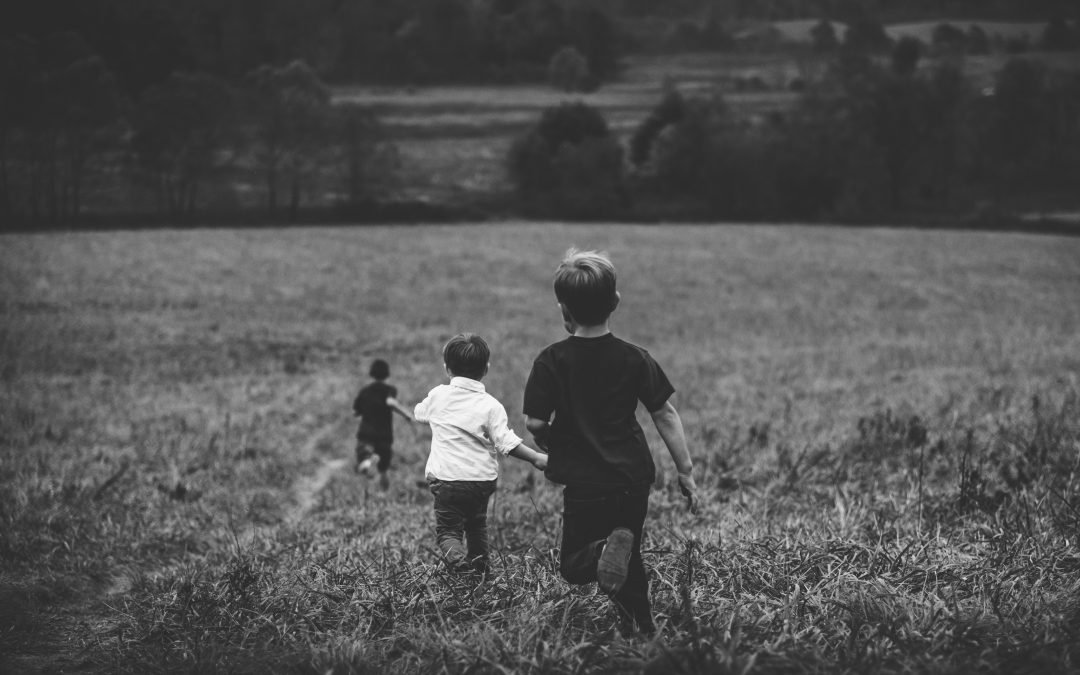
by Sangeetha Vallat | Jul 9, 2025 | Musings, Today's Katha
I wrote this blog post in June 2019. Growing up as a single child, I looked forward to summer vacations where I could meet my cousins. We had such fun; indeed, they were golden days. Don’t you all have cherished memories of holidays with cousins?
Those Golden Days
Cousins are often our first friends, and I was blessed with a truckload of the very best. Born into a sprawling family on both my maternal and paternal sides, I have a lifetime of memories etched into my ever-fading memory bank. As an only child, my summers were a season of joy, spent soaking up the essence of siblinghood with my cousins.
Growing up in the city, everything felt like it belonged to someone: mine, yours, his, hers. But stepping into our ancestral home, or tharavad, was a different story. There, everything was ours. The extensive landscape, the food on the table, the toys, the books, nothing had a single owner, and that’s what made it magical. With my Achan being one of 12 siblings and Amma one of 7, I had no shortage of cousins to bond with.
Summer vacations were split evenly, half spent in my mom’s tharavad, where only my grandparents lived, and the other half at my dad’s tharavad, where cousins from Bangalore would descend. My mom’s side of the family lived in Chennai, and we often met there. In the first half of my vacation, I read books, played with the neighbours and engaged in conversations with old people. There was a respected older man of our family who encouraged my outspokenness and chuckled at my stories. Although I enjoyed the quietness here, it was the second half of my vacation that I genuinely looked forward to. Achan’s home was always overflowing with aunts, uncles, cousins, and the gentle contrast between my tall, stoic grandfather and my petite, ever-smiling grandmother. Yet somehow, there was always room for everyone.
This tharavad sat in splendid isolation, overlooking an endless expanse of paddy fields. After harvest, the brown sun-baked fields would turn into our playground. If harvest was delayed, we pranced around the green paddy fields, taking care not to fall and damage the crops. Nature was our constant companion, with the whir of crickets, the croaking of frogs, shiny beetles buzzing toward tube lights, and even the occasional snake.
Mornings began with open-air chatter as we brushed our teeth under coconut trees, painting the ground white with foam. We’d collect fallen mangoes in the backyard, though grandma never stopped feeding us plate after plate of sliced mangoes. We watched cows being milked, giggled at the odd sensation of their warm, velvety necks, and ran wild under the canopy of trees. Our private pond, overgrown granite steps, and all were a favorite haunt. We’d link hands and wade in together, always under the watchful eyes of an adult. Sometimes we’d venture to the river, a grand expedition involving soaps, clothes, bundles, and a lot of splashing. I still remember the delight of learning to float in the arms of an aunt, even as my delicate skin broke into rashes from the muddy water.
Mealtimes were chaotic. The dining space rang with laughter, noisy banter, and the occasional special treat from a loving aunt, usually shared with a favorite cousin. Everyone had their “person”, an uncle who brought treats from work, an aunt who’d sneak you an extra laddu. My favorite was an uncle who’d ask each of us what we wanted, patiently collecting our long lists and returning with goodies by evening. We’d watch for him from afar, racing down the winding path through the fields to greet him and carry his bags.
Evenings slowly faded into nights filled with long shadows and eerie sounds. I’d cling to my dad, terrified of flying toads and ghost stories. My countryside cousins were braver, unfazed by snakes or frogs, and I admired them immensely. Long walks through the fields were a delight, plucking husked rice grains and gobbling them up as my cousin peeled them one by one. Even today, I can’t resist touching “touch-me-nots” when I spot them, no matter who’s watching.
We explored every nook and cranny of the tharavad, climbing into the attic to stare at the stuffed bull’s heads (some forefathers’ hunting prowess or a beloved pet), sift through dusty books, or admire the wall of wedding photos. We imagined our own wedding pictures joining the ranks one day.
Of course, we had our mischief too. When our unmarried uncles stepped out, we’d sneak into their bachelor quarters to ogle at Debonair, Playboy, and a few local Malayalam magazines, one of us always keeping watch across the fields.
Hide-and-seek was an adventure with so many secret spots to vanish into, sometimes so good we’d fall asleep unnoticed. We played “house,” fashioned bowls from teak leaves, and married each other with flower garlands. Rosary pea,(coral and black beads), “kunnikuru,” were our precious jewels. And oh, the countless trips to “Sajna Musicals” to record our selection of songs onto cassettes. I even befriended a shopkeeper near the bus stop, Chandran, who waited eagerly every summer to hear my wild stories. Even after I started working, I made time to visit him until he passed away a few years ago.
We had a local thatched-roof movie theatre that would restart the film just for us when we arrived late, thanks to my uncle’s popularity! A dozen of us would pile into an auto with snacks packed by grandma….Kerala banana chips and sweet halwa, and giggle our way through the ride. Didn’t we giggle and whisper too much with cousins and friends in our younger days? One cousin, fresh from Bangalore, once wailed for Gold Spot when all the theatre offered was Kappilandi (peanuts) and chaya.
Weddings were frequent and fun in the tharavad. With limited washrooms, a makeshift shed was built near the well. Bathing in pairs to save time often meant more laughter and less bathing. We have photos of all the women wearing the same red lipstick (courtesy of our Bangalore cousin), striking poses with the newlyweds while we expertly photobombed them. I secretly wished my wedding reception would be held right there, in the courtyard, with a paper plate of mixture and a cupcake balanced with a banana.
As we grew older, innocence slowly faded into caution. No more shared baths or hand-holding walks. But the bond only deepened as we whispered our secrets, first crushes, ambitions, and heartbreaks, late into the night.
Time flew. Cousins married, moved, and became parents. The old tharavad eventually crumbled, no more communal ownership, no more central hub. But the love we cousins shared never left.
Now, no matter where we are in the world, when we reunite, we slip right back into those golden days. A glass in hand, smile on our lips, we relive every moment, every prank, every silly fight and secret. We are still that same crazy bunch, just a little older.
P.S. Just got back from a road trip with my cousins, no spouses allowed. And what a riot it was!
Picture Courtesy – Unsplash- Jordan Whitt
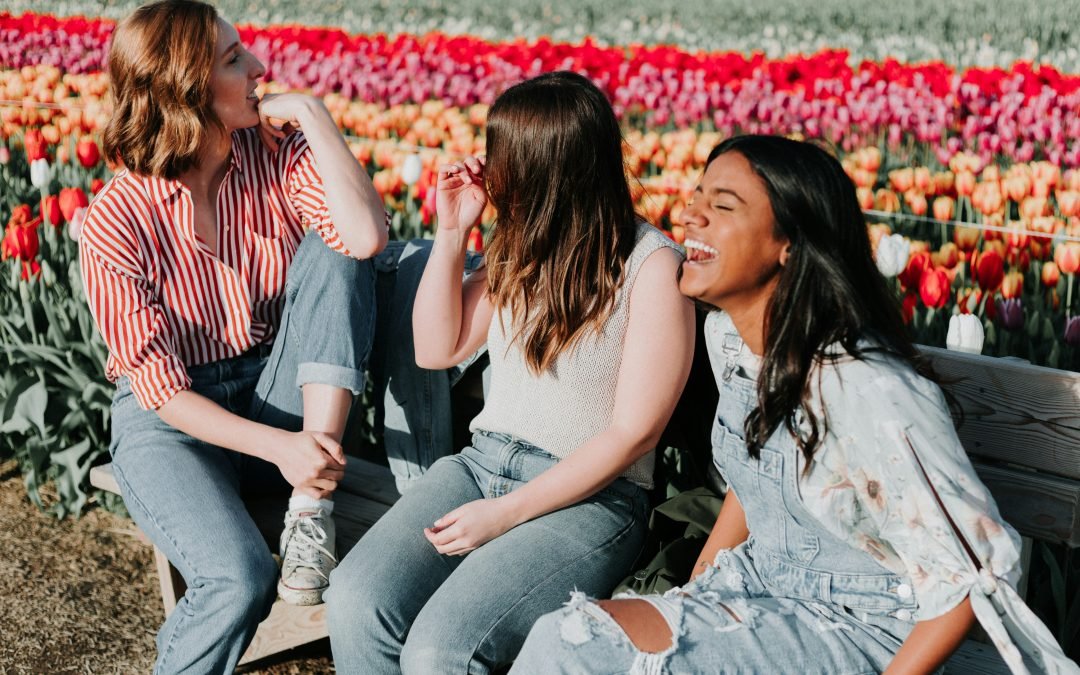
by Sangeetha Vallat | Jul 9, 2025 | Fiction Bites, Short Stories
When BTB (Beyond The Box) Chronicles came up with a prompt in 2021, on Unconventional Friendships, I wrote this, based on my friends in Dubai. This story was featured in their Edition 7 in Aug 2021.
MUM’S THE WORD.
Shailaja hung on the door handle, tugged it twice before sprinting into the foyer. As the elevator clipped to her floor, she gazed through the mashrabiya. An ever-enthralling view – the tallest building in the world, a monument of steel and concrete towered imperially with its head in the clouds. The lift doors opened with a ding. Her thoughts hovered over her friends, who would have assembled already.
And she knew that they would not open their mouths until she reached.
Shailaja, Benaifer, Mehroon, and Tahira met a few months ago at the playground. While their kids were swinging and sliding, the women smiled and nodded at each other.
Shailaja linked her palms in Namaste and spoke in English, “Hello. I am Shailaja from India.”
Mehroon’s burka flapped as she clucked, “Ah, I from India. English no. Malayalam.”
Shailaja, a Malayalee from Mumbai, not very conversant in her mother tongue, managed to string words together. She assured Mehroon that conversation was possible without English.
Benaifer and Tahira mumbled a flaccid hello. They furrowed their brows at the two women chattering in a strange nasal twang.
Benaifer, from Karachi, chirped in Urdu, and Tahira, from Cairo, spouted only Arabic. Shailaja managed to converse in Hindi with Benaifer, and her love for acting, which she had developed since school, aided her in enacting the conversation with Tahira.
When Mehroon drawled a sentence in Malayalam, Shailaja decoded it into Hindi, which Benaifer grasped. Getting through to Tahira posed a challenge. She scratched her mauve hijab, staring at her three friends gesticulating in a frenzy. After a few unsuccessful attempts, they reached a mutual agreement. Shailaja would pantomime, and the others would not interfere.
Every evening, the foursome convened at the playground. It then slowly branched out into visiting homes. They scheduled their recipe swapping session for noon on Wednesdays. Today, the meeting was held at Benaifer’s house, where she prepared a Pashtun Chapli Kebab while the ladies took notes.
Shailaja hoped the twins stayed asleep. Their exhausted nanny enjoyed the diversion of the ‘funny women’ as she had christened them. The twins were the latest addition to Benaifer’s swelling breed. Benaifer’s salwar had flaps stitched into them, for her breasts perpetually had a baby dangling from them.
Last month, everyone relished Shailaja’s Mumbai Pav Bhaji and Mehroon’s Malabar Pathiri and Chicken Curry.
The class at Tahira’s turned out to be an adventure. Deciphering the ingredients, such as ‘mulukhiyyah’, by looking, touching, biting, or googling, was an ordeal. Halfway through the process, Tahira put the ladle down, pushed the ladies onto the couch of her cramped studio apartment, and switched on the television, where they watched a drama in Arabic without subtitles. Tahira wrapped up the dish. The soup and the vine leaves were delicious.
So, without Shailaja, not a tongue will move other than to greet – Salaam Alaikum and Walaikkum Assalam. She needed to be there at Benaifer’s for the mutton to cook.
Can you imagine three women sitting silently?
An Oxymoron indeed!
***
Glossary
Mashrabiya – Lattice work.
Burka – An outer garment worn by Muslim women.
Hijab – The cloth covering the head/hair by Muslim women.
Pashtun Chapli Kebab – A lamb dish
Mumbai Pav Bhaji – Bread and Vegetable Curry.
Malabar Pathiri – A type of bread/roti.
Mullukhiyah – Egyptian Spinach.
Salaam Alaikum & Walekkum Assalam – Greetings in Arabic.
Picture Courtesy- Unsplash – Pricilla Du Preez






